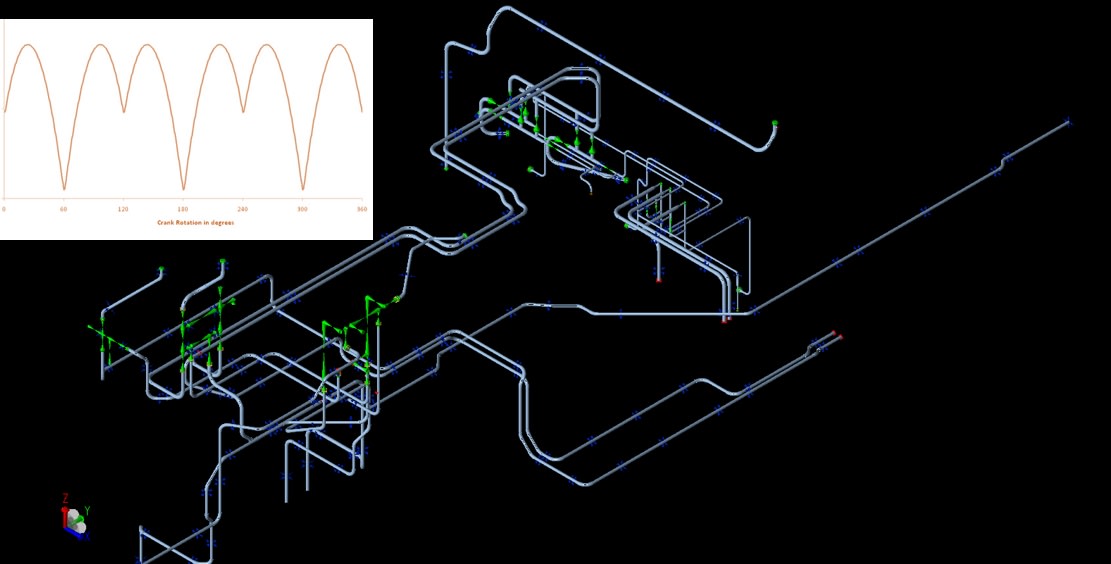Stressman Engineering Uses CAESAR II in Backward Engineering Project with Success
Stressman Engineering is a global Norwegian engineering company operating in numerical analysis since 2010, with a focused team that carries out mechanical stress analysis of pipes, vessels, structures and other mechanical components. Here, we will look at a project where a client selected Stressman to discover where and why extensive vibrations were coming from in an HP Mud system on a Norwegian oil rig that was being manufactured in a shipyard in China.

Example of HP Mud system in CAESAR II
The starting point of the project involved modeling the existing files again according to the system drawings via CAESAR II to ensure accurate analysis. Using the third party application BOSpulse from DYNAFLOW enabled further analysis working with CAESAR II to carry out the fluid pulsation investigation. Harmonic analysis was then carried out by pulling the files from BOSpulse back into CAESAR II.
As it was still unclear where the vibrations were coming from, further in-depth analysis that would take into account all the pipe supports was required. As the pipe vibrations were still not amplifying in theory as much as they were in real life, backward engineering was then viewed as the best way forward to find and resolve the issue.
When a pinpointed area of where the vibrations were coming from in the system was found, it was then a process of working through the different supports and running and re-running analysis. During the different stages of the project, efficiency was maintained because of the smooth data and file transfer between CAESAR II and third-party applications. When the key pipe support was identified, the next step was to discuss the drawings with the onsite implementation team to find why this section was not acting like the rest of the pipe supports.
The team discovered the pipe support had been installed but not welded to the support structure, resulting in it behaving as a rest support, sliding back and forth when the system was in use, causing the vibrations. The support was then welded into place, and the vibrations stopped.
Not being able to find where and why the vibrations were occurring could have resulted in a fatigue fracture and loss of structural integrity, which is critical. Failure of the main mud pipe could have led to accidents, rig downtime and financial loss.
CAESAR II enabled the Stressman team to carry out detailed modeling and analysis with smooth integration with third party solutions, saving time, ensuring accuracy and ensuring safety of the HP mud system.
Stressman Engineering has decades of extensive experience with Hexagon’s PPM division’s CAESAR II solution and moving forward will continue to use PPM solutions in its upcoming projects to ensure optimization of processes, easy integration with third party solutions, efficiency and visibility.
Read the entire case study to learn more about the problems solved and the benefits gained.
